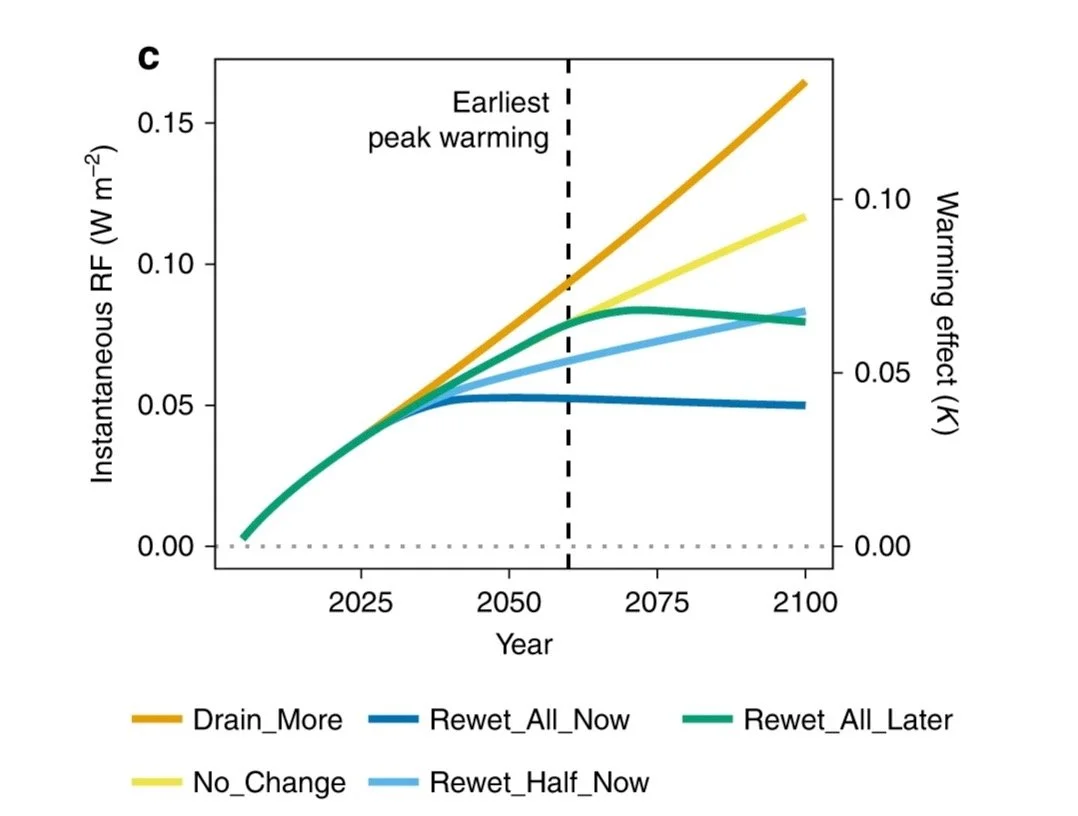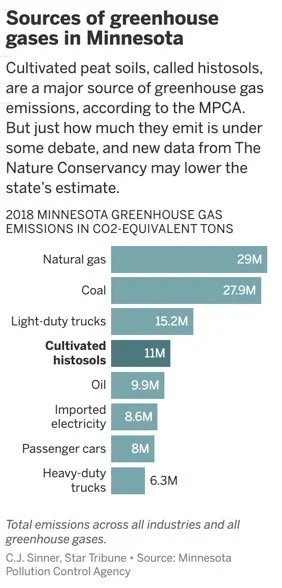Rewetting Drained Temperate Peatlands Verified Carbon Standard (VCS) Methodology: Baseline Scenario
What is the Baseline Scenario?
In general terms, the baseline scenario of a carbon offset project is analyzing the land use and greenhouse gas (GHG) emissions from a project area if the project were not to occur. Having an accurate baseline scenario is a crucial step for carbon offset projects. This is because the removal/reduction of GHG emissions from the project will be compared to the GHG emissions from the baseline scenario. Thus, having huge implications on the amounts of carbon credits awarded to the project once run through a crediting GHG program like the Verified Carbon Standard (VCS).
Mitigation Partners, Inc.'s (MPI) goal of restoring drained peatlands in Northern Minnesota, VCS’s methodology for rewetting drained peatlands (found here) allows us to confidently establish accurate baseline scenarios. This methodology lays out certain procedures and criteria to pinpoint the most plausible baseline scenario. The methodology states, at the project start date the baseline scenario must:
Be a drained peatland
Land use of
Agriculture
Peat extraction
Forestry
The above activities have not or will not be profitable
Of course, when considering peatland restorations, there can be various project areas which may not meet the criteria outlined (ex. continuation of/profitable agriculture on project area). In these instances, the methodology refers to the Clean Development Mechanism (CDM) tool, Combined tool to identify the baseline scenario and demonstrate additionality in A/R CDM project activities (found here). This tool was developed for afforestation and reforestation CDM projects but can be applied to rewetting peatlands through use of a table in the VCS methodology referenced earlier. The CDM tool establishes a procedure to identify and choose the most plausible baseline scenario, and demonstrate additionality. If you are curious how MPI uses this tool in relation to rewetting peatlands in Northern Minnesota, investigate further with our article on alternative baseline scenarios and establishing additionality here.
Baseline Scenario in Context
In talking about baseline scenarios, it is important to demonstrate the effects if baseline scenarios stayed our reality (i.e. there were no restorative peatland projects). Peatlands are unbelievable carbon sinks, but when drained they turn into a source of carbon emissions. Emissions that are unaffordable in a world which is facing devastating consequences from climate change. The graphic below gives a clear-cut visual representation of what would happen if the baseline scenario for drained peatlands would continue on.
source: https://www.nature.com/articles/s41467-020-15499-z
This research is so impactful because it shows how much of an effect rewetting and restoring drained peatlands can have. Rewetting peatlands now could significantly contribute to the mitigation of climate change. Even rewetting half of them now could make a huge impact.
To further sink in the point, this graphic from the Star Tribune puts into context how much GHG emissions drained peatlands account for in the state of Minnesota.
Cultivated histosols, meaning farmed/drained peatlands, are the fourth highest GHG emitter in Minnesota. The Minnesota community, and the global community in general, can not afford for a natural carbon sink to be such a large contributor to GHG emissions. This is a preventable and rectifiable problem. A problem that MPI is working tirelessly to fix. If you would like to learn more about baseline scenarios, VCS, or our work at MPI please contact us.
Let’s get started!
Contact Mitigation Partners, Inc. (MPI) today with your ecological restoration and carbon offset needs. Our team is ready with answers and expert services to bring your vision to life.
Mitigation Partners, Inc. Founders Dax Dickson & Tory Christensen



